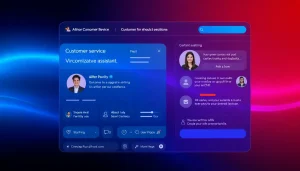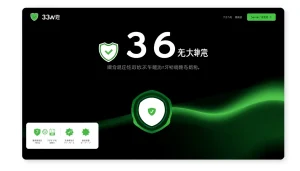Understanding Call Center Pricing: Comprehensive Insights and Cost Factors for 2025
Overview of Call Center Pricing Models
Understanding Call Center Pricing can be a complex task, as the costs associated with these services vary greatly depending on numerous factors. From geographical location to service providers, the pricing structures are diverse and can impact the decision-making process for businesses looking to outsource their customer service operations. This article will delve into the common pricing structures in call centers, explore the factors that influence these costs, and provide a comprehensive comparison between domestic and international pricing models.
Common Pricing Structures
Call center pricing can generally be segmented into several models, each catering to different business needs. Here are the most common structures:
- Per-Call Pricing: Businesses are charged based on the number of calls handled. This model is beneficial for companies with fluctuating call volumes.
- Per-Minute Billing: Charges are incurred based on the duration of each call. This option allows for precise budgeting based on actual call activity.
- Monthly Retainers: Businesses pay a flat monthly fee for a predefined amount of service. This structure can offer predictability in expenses and is often used by companies with stable call volumes.
- Agent-Based Costing: This model charges based on the number of agents utilized. It is ideal for companies looking to scale their services according to demand.
Factors Influencing Call Center Costs
A variety of factors can influence the overall cost of utilizing call center services. Understanding these factors is essential for making informed decisions. Key considerations include:
- Location: The geographical location of the call center plays a significant role in pricing. For instance, offshore solutions typically offer lower costs compared to U.S.-based centers.
- Service Levels: The complexity of services offered can impact pricing. Tiered service levels, such as basic support versus technical support, will come at different price points.
- Technology Investment: The technology a call center uses, including advanced software and automated systems, can affect costs positively or negatively.
- Training and Expertise: Costs increase with the level of training and expertise required for agents to handle specific tasks effectively.
Comparing Domestic vs. International Pricing
Deciding between domestic and international call center services involves weighing various factors including costs, quality, and customer experience. Generally, domestic call centers in the U.S. have higher operational costs compared to international counterparts in countries like India or the Philippines. However, domestic centers may offer better cultural alignment and language proficiency. Here’s a breakdown of each option:
- Domestic Call Centers: Pricing typically ranges from $20 to $40 per hour per agent. These centers often provide a level of service and understanding of domestic consumer behavior that can enhance quality.
- International Call Centers: The cost of services in countries like India or the Philippines can be as low as $6 to $14 per hour per agent. While these options may save costs, potential challenges include time zone differences and language barriers, which can affect service quality.
Cost Varieties by Location
Average Pricing in the U.S.
In the United States, the cost of call center services generally reflects the market wage for customer service representatives, which can significantly affect overall pricing:
- Entry-Level Support: Approximately $15 to $20 per hour.
- Mid-Tier Support: Ranges from $25 to $35 per hour for more specialized skills or experiences.
- Technical Support: Prices can soar to $30-$50 per hour, especially for complex products and services. The initial investment in training and ongoing development adds further financial implications.
Understanding Pricing in India and the Philippines
India and the Philippines are two of the most cost-effective countries for outsourcing call center operations, boasting a vast workforce fluent in English and skilled in customer service:
In India, businesses might incur costs ranging from $6 to $14 per agent per hour, depending on the service complexity. Meanwhile, the Philippines is slightly higher but remains competitive, with rates around $7 to $15 per hour. This pricing model enables companies to offer affordable customer support while maintaining service standards.
Benefits of Nearshore Solutions in Mexico
For companies looking for a middle ground between domestic and international services, nearshore solutions in Mexico provide significant benefits:
- Cost Efficiency: Hourly rates in Mexico generally fall between $15-$25, which is often less than U.S. costs but more than Asian outsourcing rates.
- Minimal Time Zone Difference: Mexico shares time zones with the U.S., allowing for seamless communication and quicker response times compared to international options.
- Cultural Affinity: This geographical proximity often translates to cultural similarities, enhancing customer experience and satisfaction.
Variable Costs in Call Centers
Per-Minute and Per-Call Rates
Variable pricing structures such as per-minute and per-call rates are commonly used by call centers, making it crucial for businesses to understand their potential impacts:
Per-call rates can be ideal for low-volume clients, as they are charged only for the calls that they utilize. Alternatively, per-minute rates favor high-volume clients who can benefit from negotiated lower rates through increased call duration.
Monthly Subscription Models
Monthly subscription models provide businesses with predictable costs, manageable budgets, and clear expectations. This model can be beneficial for companies that require consistent customer support throughout the month:
- Basic subscription examples include packages for different service levels, such as basic answering services versus full customer support solutions.
- Options frequently come with various tiers, allowing clients to upgrade services according to their evolving needs.
Seasonal Pricing Dynamics
Call centers often experience fluctuations in demand during peak seasons, leading to varying costs:
During busy seasons like holidays, some providers may implement seasonal pricing that could increase pricing or offer incentives. Businesses must consider such dynamics when planning their budgets and customer service strategies.
Improving Cost Efficiency
Strategies for Cost Control
To maximize the cost-efficiency of call center operations, businesses can implement several key strategies:
- Volume Forecasting: Accurately predicting call volumes can help businesses negotiate better pricing with their service provider.
- Selective Staffing: Employing a mix of skilled agents for complex issues and entry-level staff for basic inquiries can reduce costs.
- Use of Scripts: Implementing detailed scripts can improve call handling efficiency and reduce the time spent on each call.
Using Technology to Reduce Expenses
Leveraging technology is vital for improving operational efficiency and reducing costs within a call center:
- Automated systems like Interactive Voice Response (IVR) can direct calls and reduce the load on live agents.
- Cloud-based software solutions enable flexible scaling and can often result in lower overhead costs compared to traditional systems.
- Analytics tools can provide insights into performance metrics, allowing for data-driven decision making and efficiency improvements.
Performance Metrics to Monitor
Monitoring key performance indicators (KPIs) is essential for ensuring cost-efficiency in call centers:
- Cost Per Call (CPC): Calculate the average cost incurred for each call received.
- Agent Utilization Rate: Assess how efficiently agents are being used, aiming for an optimal utilization rate of around 70-80%.
- First Call Resolution (FCR): Measure the percentage of calls resolved on the first interaction, which directly impacts cost savings.
Future Trends in Call Center Pricing
Forecasting Changes for 2025 and Beyond
As the call center landscape continues to evolve, emerging trends will shape pricing structures in forthcoming years:
The rise of remote work and digital transformation will likely foster a shift towards hybrid models, where businesses balance in-house and outsourced services, ultimately impacting costs.
Impact of AI and Automation on Costs
The increasing utilization of AI and automation in call centers is poised to significantly alter cost structures:
- Automated systems can handle routine inquiries, thus reducing the burden on human agents and lowering operational costs.
- AI-driven insights can streamline processes, improve customer experience, and inform pricing strategies.
Shifting Consumer Expectations and Their Effects on Pricing
The way consumers interact with businesses continues to evolve, leading to changing expectations that can affect pricing:
- As customers expect faster and more efficient resolutions, service providers may need to invest in better training and technology, potentially raising service prices.
- On the other hand, companies that can leverage technology to meet these demands efficiently may find themselves able to offer competitive pricing structures.














Post Comment